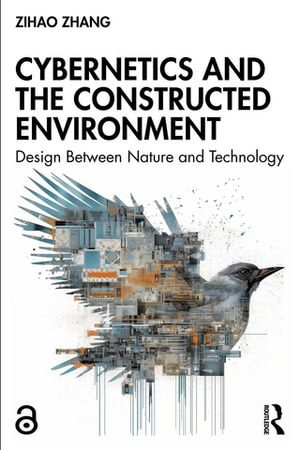
eTEXT
Cybernetics and the Constructed Environment
Design Between Nature and Technology
By: Zihao Zhang
eText | 25 July 2024 | Edition Number 1
At a Glance
eText
$81.40
or
Instant online reading in your Booktopia eTextbook Library *
Read online on
Desktop
Tablet
Mobile
Not downloadable to your eReader or an app
Why choose an eTextbook?
Instant Access *
Purchase and read your book immediately
Read Aloud
Listen and follow along as Bookshelf reads to you
Study Tools
Built-in study tools like highlights and more
* eTextbooks are not downloadable to your eReader or an app and can be accessed via web browsers only. You must be connected to the internet and have no technical issues with your device or browser that could prevent the eTextbook from operating.
ISBN: 9781040101810
ISBN-10: 104010181X
Published: 25th July 2024
Format: ePUB
Language: English
Publisher: Taylor & Francis
Edition Number: 1
You Can Find This eBook In
Non-FictionComputing & I.T.Computer ScienceIndustry & Industrial StudiesPrimary IndustriesAgriculture & Related IndustriesArts & EntertainmentArchitectureLandscape Art & ArchitectureArchitectural Aspects of City & Town PlanningArt FormsNon-Graphic Art Forms
Installation ArtEarth Sciences, Geography, Environment, PlanningRegional & Area PlanningUrban & Municipal PlanningEngineering & TechnologyBiochemical EngineeringBiotechnologySociety & CultureSocial GroupsUrban CommunitiesEnvironmental ScienceTechnology in GeneralTechnical DesignKids & Children's BooksChildren's Non-FictionArt & Artists for Children & Teenagers
This product is categorised by
- Non-FictionComputing & I.T.Computer Science
- Non-FictionIndustry & Industrial StudiesPrimary IndustriesAgriculture & Related Industries
- Non-FictionArts & EntertainmentArchitectureLandscape Art & ArchitectureArchitectural Aspects of City & Town Planning
- Non-FictionArts & EntertainmentArt FormsNon-Graphic Art FormsInstallation Art
- Non-FictionEarth Sciences, Geography, Environment, PlanningRegional & Area PlanningUrban & Municipal Planning
- Non-FictionEngineering & TechnologyBiochemical EngineeringBiotechnology
- Non-FictionSociety & CultureSocial GroupsUrban Communities
- Non-FictionEngineering & TechnologyEnvironmental Science
- Non-FictionEngineering & TechnologyTechnology in GeneralTechnical Design
- Kids & Children's BooksChildren's Non-FictionArt & Artists for Children & Teenagers
























